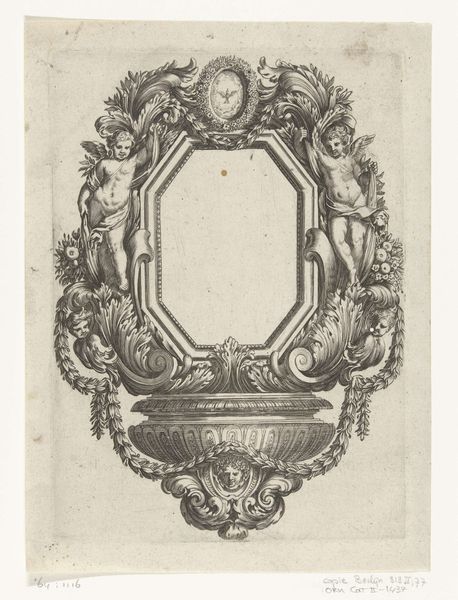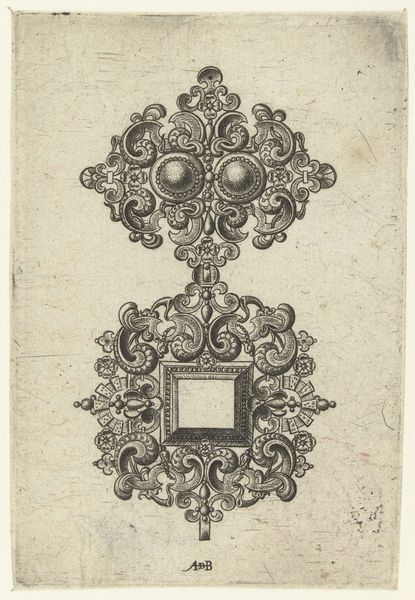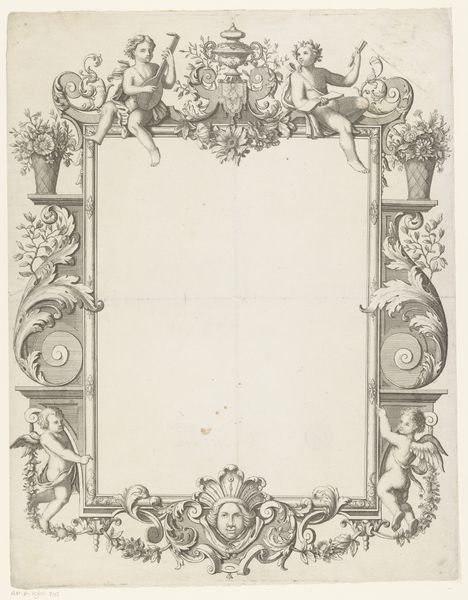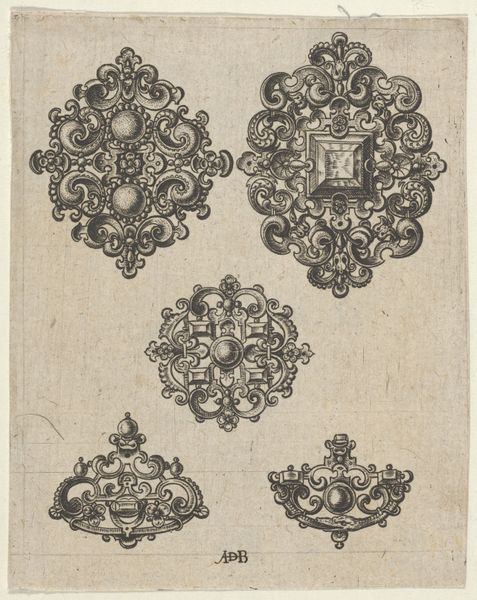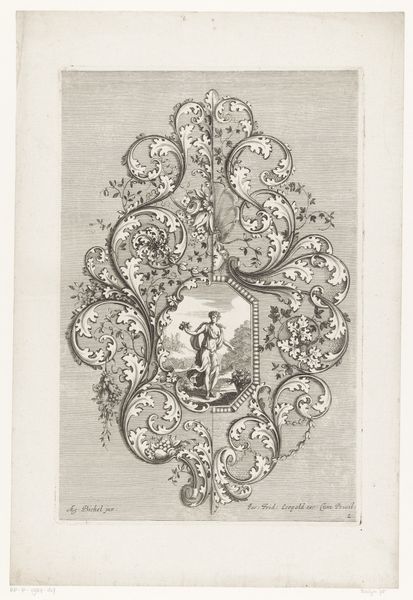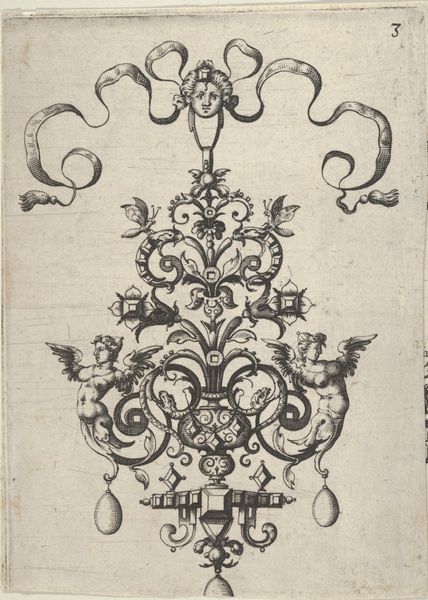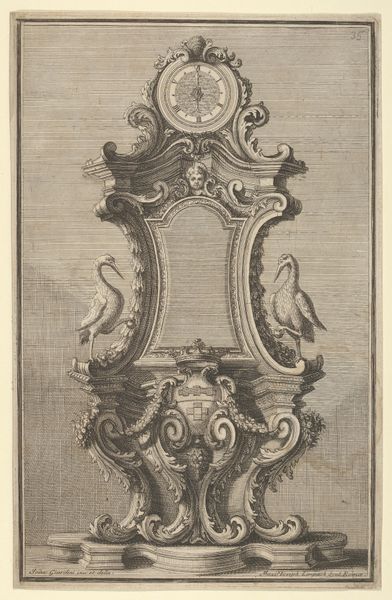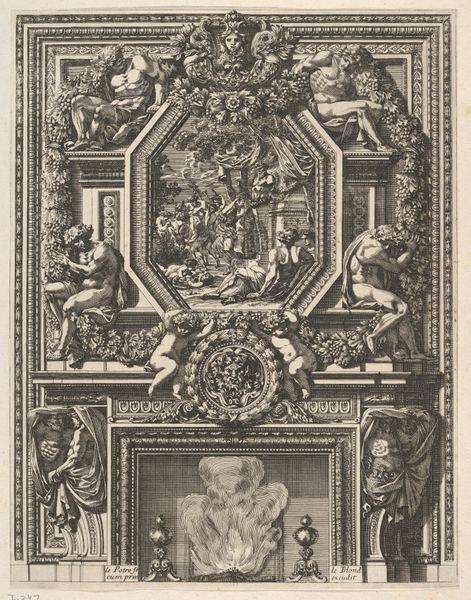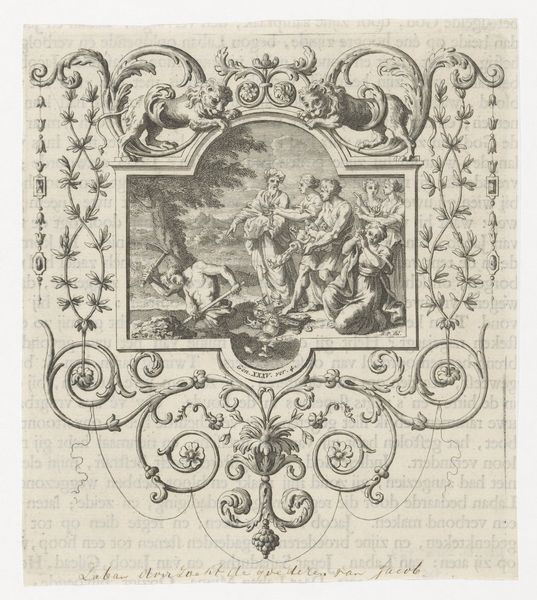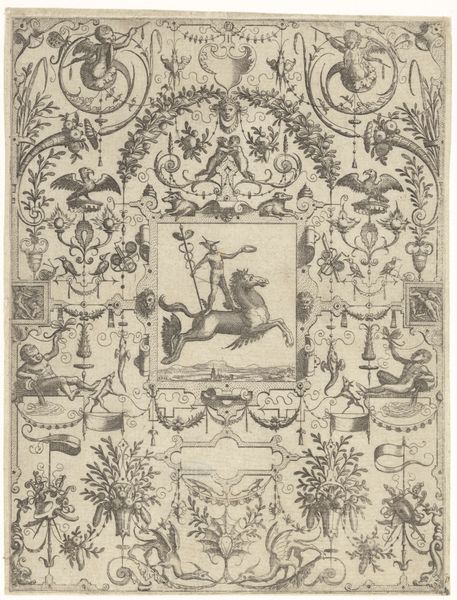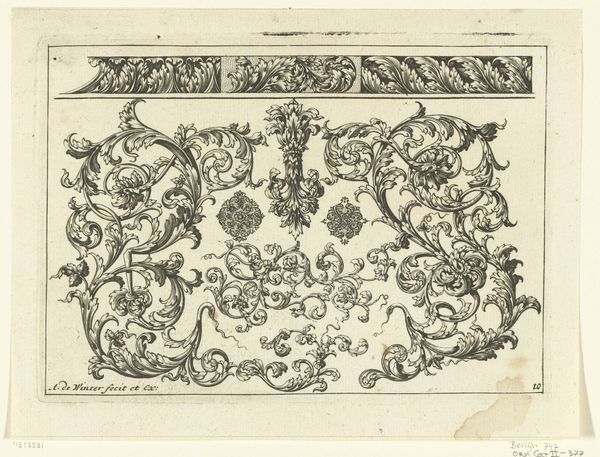
drawing, ornament, print, metal, engraving
#
drawing
#
ornament
#
allegory
#
pen drawing
# print
#
metal
#
mannerism
#
form
#
11_renaissance
#
geometric
#
line
#
decorative-art
#
engraving
Dimensions: Sheet: 4 9/16 × 3 1/4 in. (11.6 × 8.3 cm)
Copyright: Public Domain
Curator: My first thought looking at this image is “dense.” It’s almost aggressively ornamented. Editor: It certainly is. We're looking at a drawing from between 1580 and 1600 titled “Vertical Panel with Design for a Mirror," now residing at the Metropolitan Museum of Art. The artist is Abraham de Bruyn. As the title indicates, this appears to be a design for a mirror. Curator: The symbolism seems…fraught. You have winged figures alongside skulls, unicorns mixed in with geometric shapes. There's almost a visual argument being presented here, but what is it? Editor: Well, consider the context. This piece falls squarely into the Mannerist style, characterized by its artifice and exaggeration. Mirrors, during the Renaissance, weren't just reflective surfaces; they were potent symbols of self-knowledge, vanity, and even portals to other realms. Curator: The frame is so elaborate. It almost swallows the empty space where the mirror would be. I wonder if that speaks to the aristocratic obsession with appearance during the period. More energy into presentation than the reflection itself, perhaps? Editor: That's a very astute observation. The very act of designing such an intricate frame was likely a performance of status. Remember, printmaking itself was gaining momentum during this time, which implies the potential for wider dissemination and, consequently, increased social influence. Curator: The placement of skulls both at the top and the bottom of the central empty space give me pause. Is that a constant memento mori reminder that any reflection, no matter how beautifully framed, is fleeting? Editor: Perhaps, or it could suggest a transformation. The skulls as symbols of death framing the mirrored surface--which can represent truth-- imply mortality giving way to honest self-perception. Think of the vanitas paintings that were in vogue at that time. The symbolism of that mirror within this Mannerist frame feels potent with meaning, from vanity to morality. Curator: Fascinating. It reframes how I see it, really adding another layer to what I originally considered ostentatious ornamentation. It makes me wonder what societal impact this image had and to what extent the public grasped it. Editor: Ultimately, the design reminds us that even seemingly superficial objects are deeply embedded within the complex cultural fabric of their time.
Comments
No comments
Be the first to comment and join the conversation on the ultimate creative platform.

